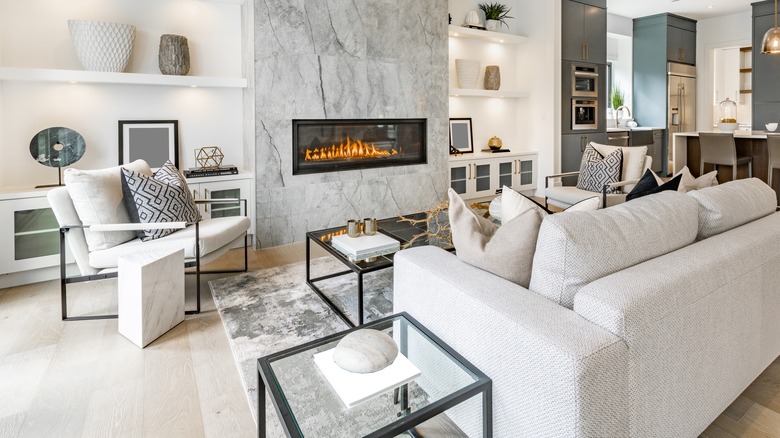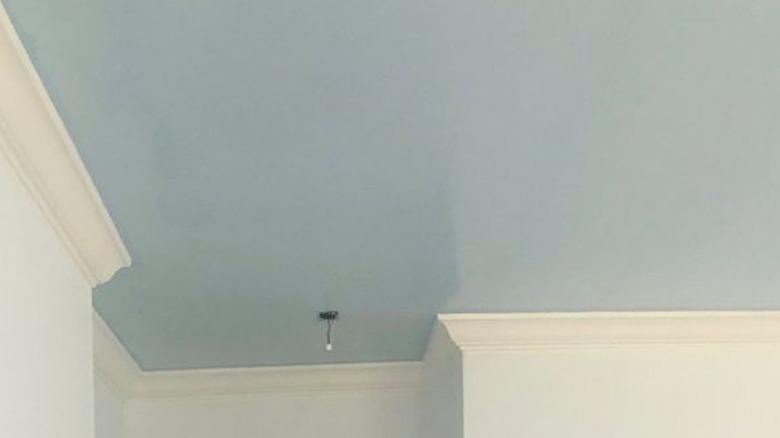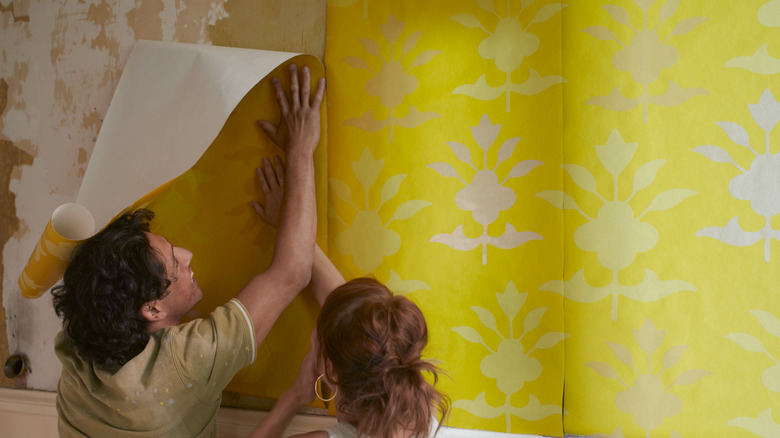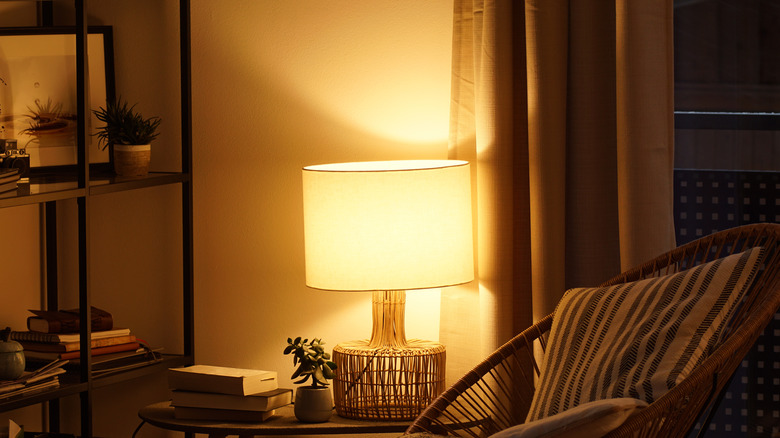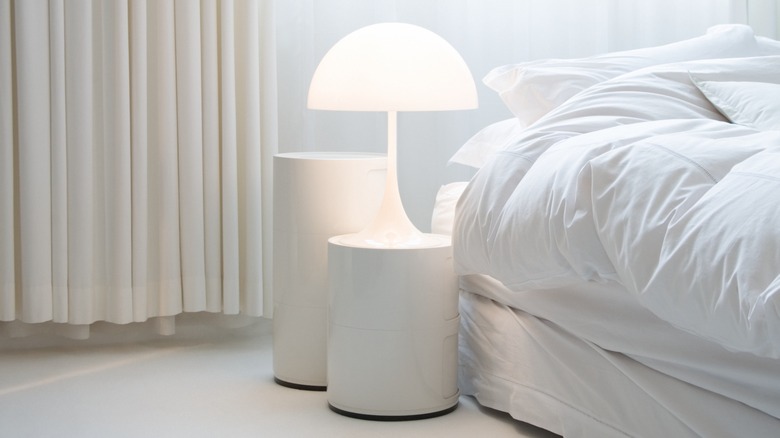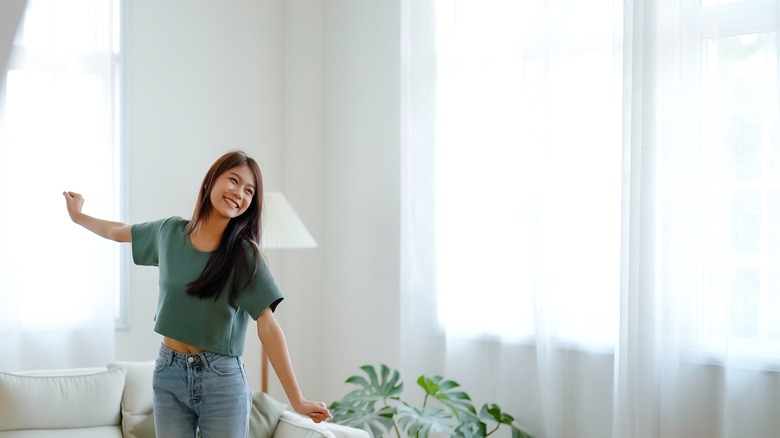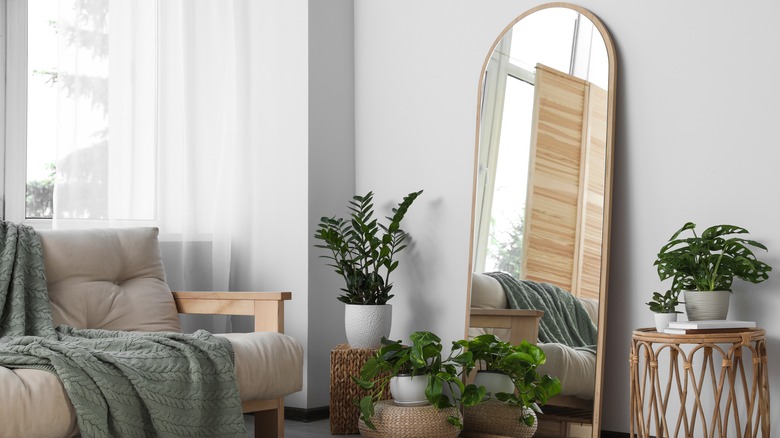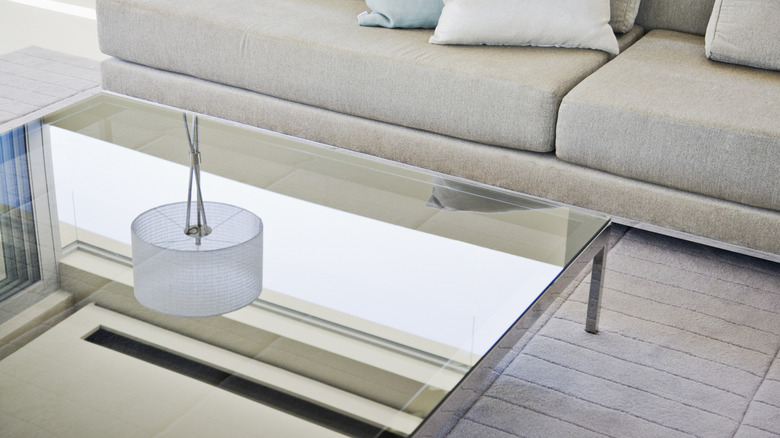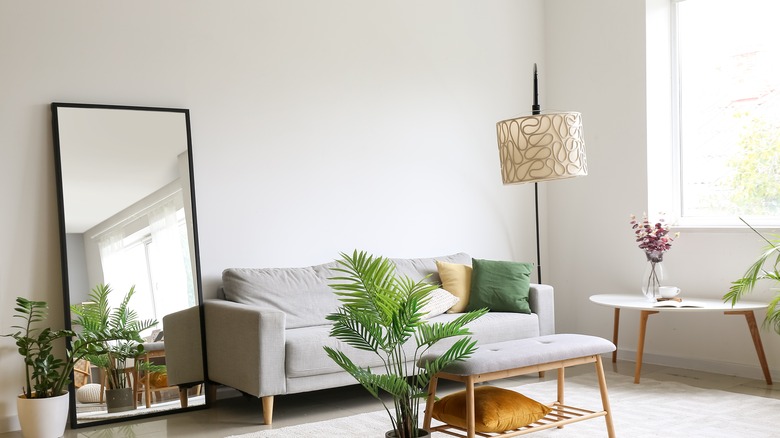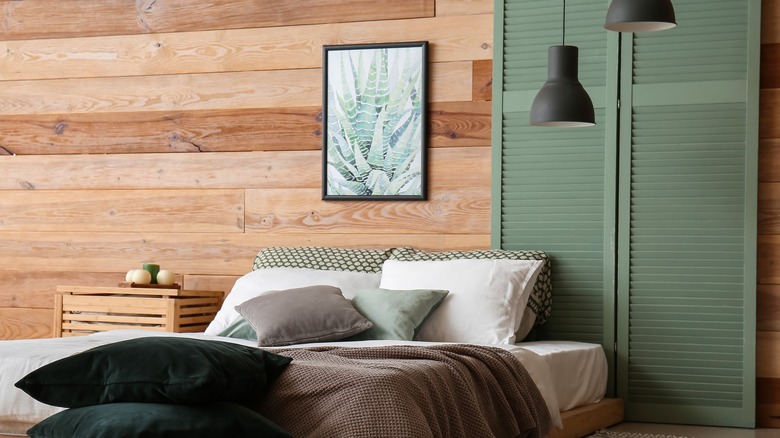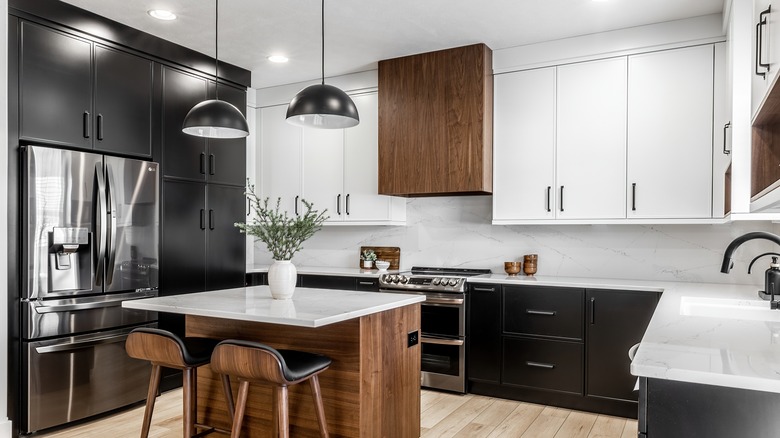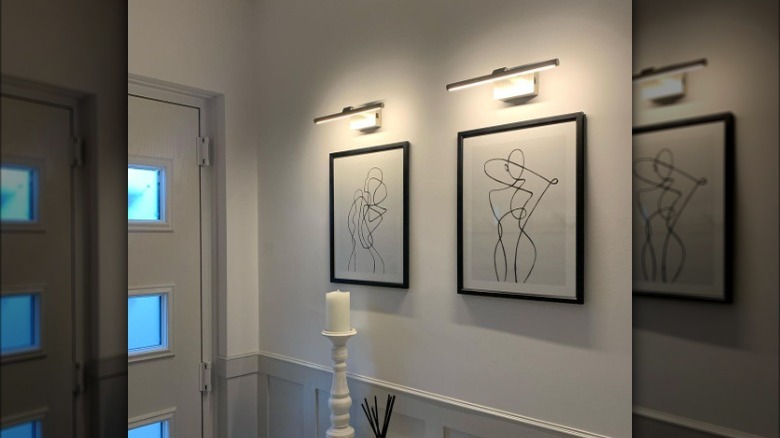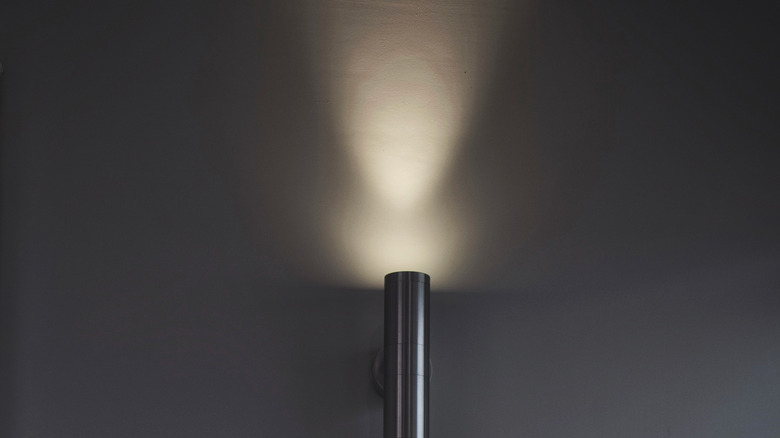15 Smart Ways To Brighten Up A Dark Room
Spaces with small windows, basement apartments, and north-facing rooms all have something in common: they lack a lot of natural light. For most people, having tons of natural light in their homes is a must-have. Natural light creates an ambiance and can highlight the materials used in the design, allowing you to see all the details that create a curated space. Natural light also has the benefits of uplifting your mood and aiding in productivity. And, of course, if you're a fan of houseplants, you know how important having the right amount of natural light is.
However, those beautiful, light-filled spaces you see in magazines and on social media aren't always the norm. Many suggest installing larger or more windows as a way to bring in natural light. And while that is a solution, it's not always a plausible option, whether that's constraints from a budget or the anatomy of a house. But that doesn't mean you must keep those rooms dark and cave-like. Regardless of the reason why the space lacks natural light, there are plenty of tricks you can use to brighten it up.
Choose lighter floors
If a room lacks natural light, you'll want to ensure you're not making the space darker with your cosmetic choices. Think about reflecting what light you do have however you can. Opt for white tile or light wood with a shiny finish so that lights from a window or light fixture bounce off the floors and around the room. A lighter base also makes the room appear larger by giving the appearance of more space on the floor and between the walls, especially if there is contrast with the wall color.
And glossy ceilings
Similar to lighter floors, lighter ceilings can also do wonders for adding brightness to the space. Paint your ceiling white or another light shade, and opt for a glossy finish. The high gloss creates a reflective surface that allows light to bounce around the room. This is a great option for rooms that receive some natural light, but the whole room isn't illuminated. Plus, paired with strategic fixture placement, both on the ceiling and on the floor, a glossy ceiling can help a room feel brighter.
Keep your windows clean
If you haven't given your windows a scrub in a while, that might be the reason why your space isn't receiving enough natural light. Dust, dirt, and other environmental remnants can stick to your window panes and block some of the sunlight that streams into the room. Give your windows a good wash, both inside and out, to eliminate anything that might have built up on the glass. And then maintain your window appearance with glass cleaner weekly or biweekly.
Bring in bright patterns
Just because a room is on the darker side, that doesn't mean you have to lean into it. When you have a room that doesn't receive a lot of natural light, you want to bring brightness in through your decor. Look for area rugs, pillows, furniture, and wallpaper that come in bold prints in light colorways. Patterns create visual interest and make the eyes dance around the room, so the space feels larger than it actually is. When possible, opt for large repeat patterns that help give the illusion of space.
Consider lighting temperature
When you don't have a lot of natural light, artificial lights become even more important. Lighting temperature is essential to giving a dark room the right kind of brightness. Add coziness with warm-colored lighting. Spaces that are meant for relaxing, like bedrooms and living rooms, can use bulbs that are 2700K, and spaces that require specific tasks, like a kitchen or home office, can use 3000K bulbs. But if you prefer a light that doesn't have a warm undertone, look for neutral bulbs with a temperature between 3100K and 4500K.
And opt for white or clear lampshades
Along with choosing the right bulb temperature, choosing the right lampshade is also an important part of creating a lighting strategy. Get the most light from the bulbs by using white or clear lampshades. With a translucent lampshade, such as one that is clear or colored glass, none of the light from the bulb will be blocked. But if you're looking to add a soft diffusion to the room, opt for an opaque or semi-opaque lampshade. Lighter colors and lightly patterned shades will also work. But you'll want to avoid dark-colored lampshades as they'll block some of the light.
Keep curtains light
When windows do receive natural light, you won't want to block it. Any window dressings you have should allow the most amount of light to flow inside. When it comes to curtains, keep them light in both color and material. Heavy fabrics like velvet or wool are too thick for light to get through; they're usually reserved for blackout curtains. Similarly, you'll want to avoid black, navy, maroon, or other dark-colored curtains, as they can also block light from bouncing around the room. Instead, opt for sheer curtains that can offer privacy while still letting light in.
Use mirrors
With a dark room, you want to multiply any light you do have streaming through the windows. Mirrors are one of the best ways to brighten a space, as they can bounce light around the room and make the entire room appear lighter. Choose a large mirror and hang it on the wall across from a window or perpendicular to a window. You'll want to assess how light comes through the window before choosing the mirror's location. A wall of mirrors can not only be a unique feature in the room but can also aid in making your room feel brighter.
Reflective metallics
Similar to mirrors, you can use reflective furniture to help bounce light around a space. Consider metallic coffee and side tables, frames on sofas and chairs, or decor such as lamps. Even small accents of silver and gold can add a bit of sparkle to the room. It's important to balance out metallics with other colors and materials, however, so the room doesn't feel too cold or sleek.
Don't overstuff the room
Regardless of large a room is, having too much furniture or too much decor is always a detriment. Stuffing the room with too many pieces can make it visually cluttered and physically smaller. Too many pieces also prevent light from spreading through the room, making it look darker and cave-like. Similarly, you don't want to have too much furniture or decor that it's blocking your light sources. Keep windows clear from furniture or windowsill decor that stops sunlight from streaming into the room.
Keep the color scheme light
If your goal is to brighten the space, you'll want to avoid dark colors. Dark colors absorb light, while brighter colors reflect it. That means dark walls, art, furniture, and details will only suck in the little light you are getting from a window. Combat this by keeping the main decorative details lighter, including paint and large furniture pieces. The interior brightness will help keep the room light and also help reflect any natural or artificial light throughout the room.
Accent with dark colors
But if you're one who doesn't love all-white or bright interiors, there are some options. You can use darker colors in a space that doesn't have a lot of light but use them sparingly. Darker colors as accents create visual interest and add depth to the space. Consider an accent wall with dark paint rather than painting an entire room. Try to paint a wall that sunlight doesn't hit, so the darker shade doesn't absorb too much brightness. As for furniture, an accent chair can be a way to add a darker but not overwhelming touch.
Highlight art
Consider art in lighter shades for your wall, or bring in bright colors if you're looking for a pop. They may be small details, but collectively, they can visually brighten your space. And to add a little more light, consider picture light sconces that sit above the art and illuminate it. Not only will these highlight the decor, but they'll also add artificial light in a subtle way to help supplement the lack of natural light.
Add uplights
Another way to boost brightness with artificial light is with indoor uplights. These are lights that sit low, like on the floor or baseboards, and shine lights upwards. They can be great for adding accents around the room or highlighting details or decor. Create an ambiance and help bounce light around the room during the day or night. You can find thin or flat fixtures that you can hide behind furniture if you don't like the look of canister lights around your space.
Consider help from a pro
If you're really feeling stumped trying to make your home feel brighter, then it might be time to call in the professionals. Lighting designers are often used in commercial or theatrical industries, but many use their skills to expertly create a beautiful lighting plan for your home. These professionals will assess your room and how much natural light it receives and devise a strategy to maximize the light–both natural and artificial–to make your room as bright as you want it to be.

